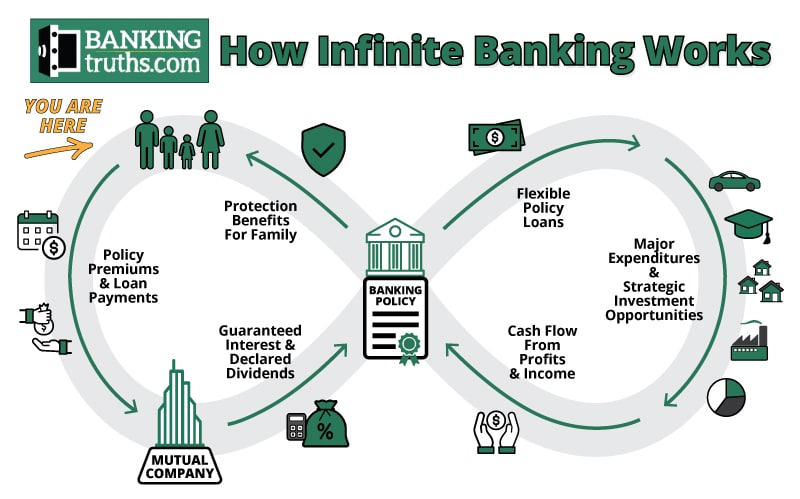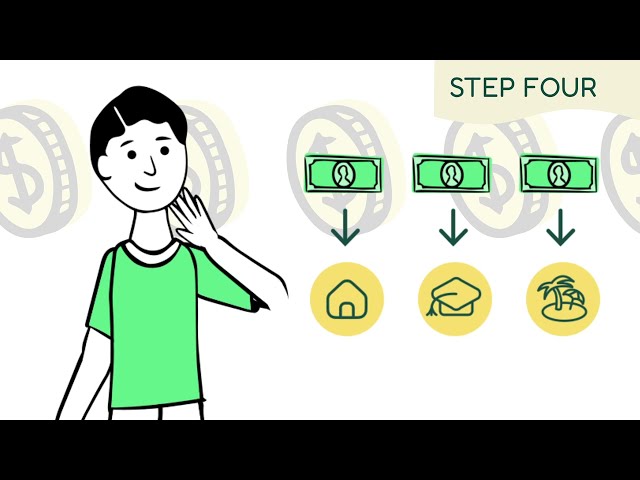All Categories
Featured
Table of Contents
Okay, to be reasonable you're actually "banking with an insurance provider" rather than "financial on yourself", however that concept is not as simple to market. Why the term "boundless" financial? The idea is to have your cash operating in several areas at the same time, as opposed to in a solitary area. It's a bit like the concept of purchasing a home with money, after that borrowing against your home and putting the cash to function in another financial investment.
Some people like to speak about the "rate of money", which essentially indicates the same point. In truth, you are simply taking full advantage of leverage, which functions, yet, certainly, functions both methods. Truthfully, all of these terms are scams, as you will certainly see below. That does not indicate there is nothing rewarding to this idea once you obtain past the advertising and marketing.
The entire life insurance sector is tormented by excessively expensive insurance, massive commissions, questionable sales methods, low prices of return, and badly enlightened clients and salespeople. If you want to "Financial institution on Yourself", you're going to have to wade into this sector and actually buy entire life insurance. There is no alternative.
The assurances integral in this item are critical to its feature. You can borrow against the majority of kinds of money value life insurance coverage, however you should not "financial institution" with them. As you buy a whole life insurance coverage plan to "financial institution" with, keep in mind that this is an entirely different section of your financial plan from the life insurance section.
As you will see below, your "Infinite Financial" policy really is not going to dependably provide this crucial economic feature. Another problem with the truth that IB/BOY/LEAP depends, at its core, on a whole life policy is that it can make acquiring a policy problematic for many of those interested in doing so.
Your Own Banking System
Dangerous pastimes such as SCUBA diving, rock climbing, skydiving, or flying additionally do not blend well with life insurance products. The IB/BOY/LEAP advocates (salesmen?) have a workaround for youbuy the policy on a person else! That may function out great, because the factor of the policy is not the fatality advantage, but bear in mind that acquiring a plan on minor youngsters is a lot more costly than it should be given that they are usually underwritten at a "basic" price as opposed to a chosen one.

A lot of plans are structured to do either things. Most typically, policies are structured to make best use of the commission to the agent marketing it. Negative? Yes. It's the reality. The compensation on a whole life insurance coverage plan is 50-110% of the very first year's premium. Occasionally policies are structured to take full advantage of the fatality advantage for the costs paid.
The rate of return on the plan is very crucial. One of the best ways to make best use of that element is to get as much money as possible into the plan.
The finest way to boost the rate of return of a policy is to have a reasonably tiny "base policy", and after that placed more cash right into it with "paid-up additions". With even more money in the policy, there is even more money value left after the expenses of the death benefit are paid.
A fringe benefit of a paid-up addition over a normal premium is that the commission rate is lower (like 3-4% rather than 50-110%) on paid-up enhancements than the base plan. The much less you pay in payment, the higher your price of return. The price of return on your money value is still mosting likely to be adverse for some time, like all cash worth insurance plan.
Many insurance firms only supply "direct recognition" car loans. With a straight recognition car loan, if you borrow out $50K, the dividend rate applied to the money value each year only uses to the $150K left in the plan.
Infinite Banking Wiki
With a non-direct recognition financing, the business still pays the very same reward, whether you have actually "borrowed the cash out" (technically versus) the plan or not. Crazy? That knows?
The business do not have a source of magic totally free money, so what they give up one place in the plan need to be extracted from an additional location. However if it is taken from a function you care much less around and put right into an attribute you care much more about, that is an advantage for you.
There is one even more critical attribute, normally called "clean car loans". While it is terrific to still have dividends paid on money you have taken out of the plan, you still have to pay interest on that funding. If the dividend price is 4% and the lending is billing 8%, you're not specifically appearing ahead.
With a laundry loan, your car loan rate of interest coincides as the reward rate on the policy. While you are paying 5% rate of interest on the loan, that rate of interest is totally offset by the 5% dividend on the loan. So in that respect, it acts similar to you withdrew the cash from a checking account.

5%-5% = 0%-0%. Same exact same. Therefore, you are now "banking on yourself." Without all three of these elements, this policy simply is not mosting likely to work really well for IB/BOY/LEAP. The biggest problem with IB/BOY/LEAP is individuals pressing it. Virtually all of them stand to make money from you purchasing right into this concept.
There are several insurance agents talking concerning IB/BOY/LEAP as an attribute of entire life who are not really marketing plans with the necessary attributes to do it! The issue is that those who understand the idea best have an enormous problem of interest and typically blow up the benefits of the concept (and the underlying policy).
Royal Bank Visa Infinite Avion Card
You should compare borrowing against your policy to taking out money from your interest-bearing account. Go back to the start. When you have nothing. No deposit. No cash in investments. No money in money worth life insurance policy. You are confronted with a choice. You can put the cash in the bank, you can spend it, or you can get an IB/BOY/LEAP plan.
It expands as the account pays passion. You pay tax obligations on the interest each year. When it comes time to get the boat, you withdraw the cash and acquire the boat. You can conserve some more cash and placed it back in the financial account to start to make passion once more.
It expands throughout the years with resources gains, dividends, rental fees, etc. Some of that revenue is strained as you accompany. When it comes time to get the boat, you sell the financial investment and pay tax obligations on your long-term funding gains. After that you can save some even more money and acquire some even more investments.
The cash money worth not used to spend for insurance and commissions expands throughout the years at the dividend rate without tax obligation drag. It starts with negative returns, yet hopefully by year 5 approximately has actually damaged also and is growing at the dividend price. When you go to purchase the watercraft, you borrow versus the policy tax-free.
Infinite Banking System Review
As you pay it back, the cash you paid back starts growing once again at the returns price. Those all job quite in a similar way and you can contrast the after-tax rates of return. The fourth option, nevertheless, works really differently. You do not save any type of cash nor get any type of investment for many years.
They run your credit report and offer you a loan. You pay passion on the obtained cash to the financial institution till the car loan is settled. When it is settled, you have an almost useless boat and no cash. As you can see, that is not anything like the initial three choices.
Latest Posts
Infinite Financial Group
How To Use Life Insurance As A Bank
Become Your Own Bank Whole Life Insurance